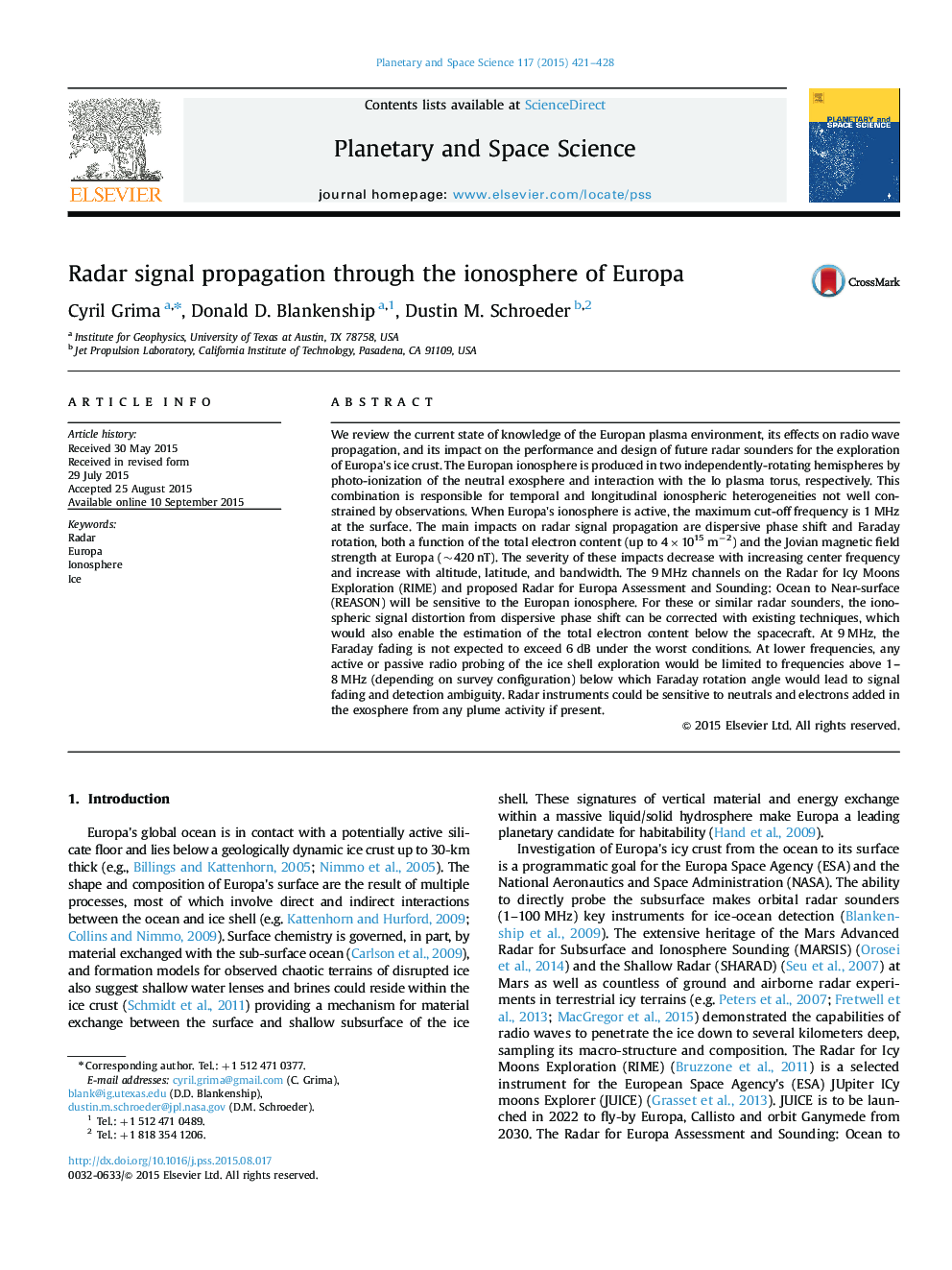| کد مقاله | کد نشریه | سال انتشار | مقاله انگلیسی | نسخه تمام متن |
|---|---|---|---|---|
| 8143144 | 1523923 | 2015 | 8 صفحه PDF | دانلود رایگان |
عنوان انگلیسی مقاله ISI
Radar signal propagation through the ionosphere of Europa
ترجمه فارسی عنوان
انتشار سیگنال راداری از طریق یونوسفر اروپا
دانلود مقاله + سفارش ترجمه
دانلود مقاله ISI انگلیسی
رایگان برای ایرانیان
کلمات کلیدی
رادار اروپا، یون کره، یخ،
موضوعات مرتبط
مهندسی و علوم پایه
علوم زمین و سیارات
فیزیک زمین (ژئو فیزیک)
چکیده انگلیسی
We review the current state of knowledge of the Europan plasma environment, its effects on radio wave propagation, and its impact on the performance and design of future radar sounders for the exploration of Europa׳s ice crust. The Europan ionosphere is produced in two independently-rotating hemispheres by photo-ionization of the neutral exosphere and interaction with the Io plasma torus, respectively. This combination is responsible for temporal and longitudinal ionospheric heterogeneities not well constrained by observations. When Europa׳s ionosphere is active, the maximum cut-off frequency is 1 MHz at the surface. The main impacts on radar signal propagation are dispersive phase shift and Faraday rotation, both a function of the total electron content (up to 4Ã1015 mâ2) and the Jovian magnetic field strength at Europa (~420 nT). The severity of these impacts decrease with increasing center frequency and increase with altitude, latitude, and bandwidth. The 9 MHz channels on the Radar for Icy Moons Exploration (RIME) and proposed Radar for Europa Assessment and Sounding: Ocean to Near-surface (REASON) will be sensitive to the Europan ionosphere. For these or similar radar sounders, the ionospheric signal distortion from dispersive phase shift can be corrected with existing techniques, which would also enable the estimation of the total electron content below the spacecraft. At 9 MHz, the Faraday fading is not expected to exceed 6 dB under the worst conditions. At lower frequencies, any active or passive radio probing of the ice shell exploration would be limited to frequencies above 1-8 MHz (depending on survey configuration) below which Faraday rotation angle would lead to signal fading and detection ambiguity. Radar instruments could be sensitive to neutrals and electrons added in the exosphere from any plume activity if present.
ناشر
Database: Elsevier - ScienceDirect (ساینس دایرکت)
Journal: Planetary and Space Science - Volume 117, November 2015, Pages 421-428
Journal: Planetary and Space Science - Volume 117, November 2015, Pages 421-428
نویسندگان
Cyril Grima, Donald D. Blankenship, Dustin M. Schroeder,
